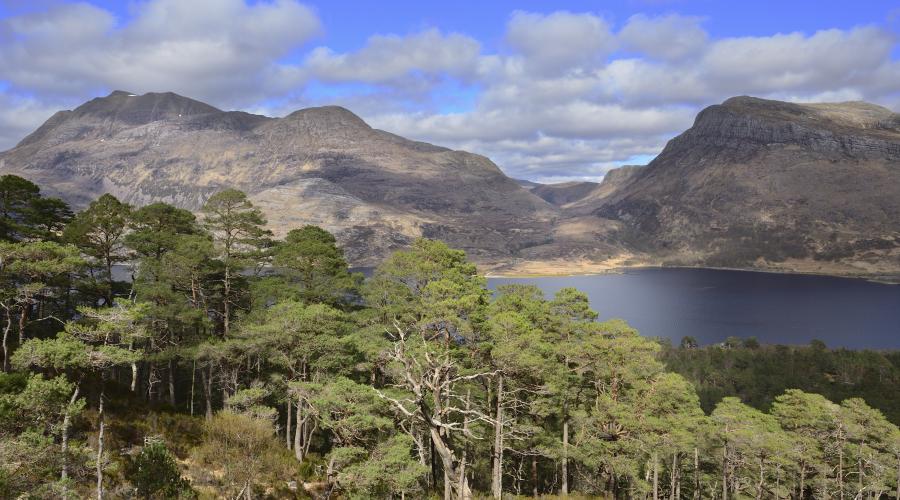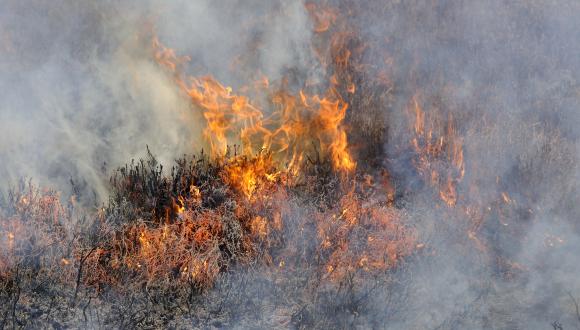
Almost 100 new Scottish sites identified to safeguard trees from climate change
26 January 2023
Efforts to preserve the highly-threatened genetic diversity of Scotland’s native trees have taken a significant step forward with the identification of 98 potential new sites for gene conservation.
A new report published by NatureScot, and written in partnership with the UK Centre for Ecology & Hydrology, looked at the climatic range of native trees, in terms of rainfall and temperature, to identify the best places to protect their genetic diversity.
The key objective of genetic conservation is to ensure trees have the potential to adapt as conditions change, by maintaining their genetic diversity. Genetic diversity is the range of different inherited traits within a species. These traits are essential for resilience to pressures such as climate change and tree diseases.
A gene conservation unit (GCU) is a clearly mapped area of forest or woodland where dynamic gene conservation is one of the main management priorities for one or more tree species. This includes managing the trees to allow and encourage production of new seedlings and saplings.
There are currently five GCUs in Scotland, representing four species of tree: Scots pine, silver birch, sessile oak and rowan. NatureScot’s report identifies a further 98 locations, adding seven species: alder, downy birch, hazel, ash, juniper, aspen and English oak.
The proposed GCUs are on areas owned and managed by a range of public, private and non-governmental organisations including 41 sites in the Highlands, and 21 in Argyll & Bute and 15 in Aberdeenshire. Among the potential new gene conservation sites are NatureScot’s Ariundle, Glasdrum and Creag Meagaidh National Nature Reserves.
The recent UN Convention on Biological Diversity (CoP15) in Montreal highlighted genetic diversity as an urgent global priority. Goals and targets were agreed to maintain and restore the genetic diversity of native, wild and domesticated species.
For trees, GCUs are being established within a Europe-wide network, known as EUFORGEN. The first GCU in the UK was declared for Scots pine in NatureScot’s Beinn Eighe National Nature Reserve in Wester Ross in 2019, recognising the distinctiveness of its ancient Caledonian pine forest.
Compatible with commercial land use, GCU status is a voluntary accreditation that recognises land managers’ commitment to promoting adaptation to future change through sustainable management of genetic diversity.
Jeanette Hall, NatureScot Woodlands Specialist, said:
“The genetic diversity of wild species is now highly threatened, globally and in Scotland. As genetic diversity diminishes, nature’s ability to adapt to climate change and resist disease is reduced, leading to population declines and ultimately, extinctions.
“These potential new gene conservation units will be an important way for us to give biodiversity the resilience it needs to survive in a fast-changing world. We are committed to preserving our native trees and expanding GCUs in Scotland is part of our response to global calls to restore and enhance our natural world by preserving genetic diversity.
“The next steps will be to declare the new native tree GCUs on our own NNR sites as a priority, while working with land owners and managers to significantly expand the network across the country.”
Stephen Cavers, Senior Scientist, UKCEH, said:
“The importance of genetic diversity is increasingly recognised around the world, as we have seen with the developments at COP15, and it is an urgent priority that we now take steps to secure it.
“The exercise we have undertaken to identify these potential new genetic conservation units shows how Scotland can play a leading role in taking a science-based approach to protecting genetic diversity.
“Importantly, protecting the variation in our tree species helps to secure their future, but also provides a valuable source of genetic diversity that is essential for applications like tree breeding, as well as for forest establishment and restoration. Both commercial and conservation planting is needed as we seek to increase the numbers of trees in our landscapes, and GCUs can be a key part of achieving that.”
Sean Hoban, Tree Conservation Biologist at The Morton Arboretum, Illinois, said:
"I am very pleased to see Scotland taking steps to ensure trees and forests maintain resiliency by maintaining local genetic diversity. This effort to safeguard genetic diversity in wild populations, where it can continue to evolve and adapt, is a model that other countries can follow and build upon- it’s a vital complement to seed banks.
“These well-planned, scientifically-informed GCUs could also support genetic monitoring and be a valuable resource for conservation interventions, and contribute to public outreach."
Read the full research report 'Pilot study to find potential new sites for genetic conservation units for native trees in Scotland'.




